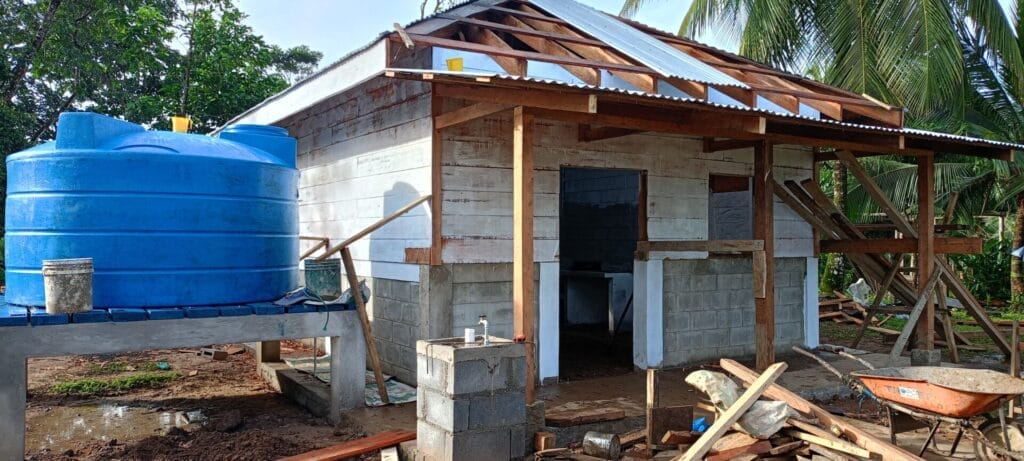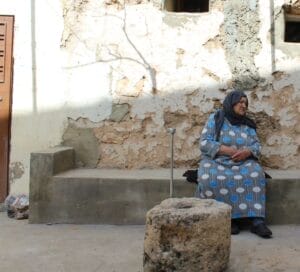
The situation in Nicaragua
Nicaragua is an extremely vulnerable country in terms of natural hazards, ranking 21st in the Global Report on Global Risks (World Economic Forum). In 2022, Hurricane Julia was considered the most devastating meteorological event in Nicaragua: it caused multiple floods and a lot of destruction on the Caribbean Coast, generating total losses for more than 367 million dollars, affecting more than 800 thousand families and damaging school infrastructure in more than 380 centers. In addition, it damaged crops in other areas, such as in the Dry Corridor. This occurred just 2 years after the devastating passage of Hurricanes Eta and Iota.
Maura Madriz, WeWorld Country Representative in Nicaragua shares with us:
“The indigenous and afro-descendant populations of the communities in the Caribbean Coast and their livelihoods and natural resources have suffered irreparable losses and damage over the years, affecting not only their economic sphere, but also disrupting their worldview and spirituality. These extreme hydrometeorological hazards have led to the loss of invaluable resources. An example of this is the loss of the Walpasiksa cemetery, a Miskito community, which disappeared after the impact of the hurricanes Eta & Iota: the sea took away their deceased.”
Another community that was greatly affected was Haulover, which until November 2020 was one of the most visited communities in the municipality of Prinzapolka due to its scenic beauty, being considered a true paradise facing the Caribbean Sea. After the hurricanes, the population lost not only their homes, but also the possibility of reactivating the tourist activity, due to the serious impact on the marine-coastal ecosystems: the total loss of their vegetation, the drastic erosion on the coast and the change in the physical characteristics of the community itself.
Our intervention
With the aim of addressing this situation and work to strengthen the capacities of several indigenous communities and rural areas of the Nicaraguan Caribbean Coast, we have implemented, together with the World Food Program, a recovery project in response to Hurricane Julia through the rehabilitation of school infrastructure.
This initiative is concentrated on the construction of four kitchens and a warehouse within schools across four communities in the municipality of Laguna de Perlas: RaitiPura, Orinoco, Marshall Point and Arenita. The action sought to ensure that these centers can have resilient infrastructures for the preparation and distribution of safe food in emergency situations. The constructions wwere complemented with the delivery of 4 Rainwater Harvesting Systems boasting a total storage capacity of 30,000 liters and with several training processes on topics related to healthy eating, water, sanitation and hygiene, and gender equality.

The action was done through schools, since in Nicaragua the school feeding program stands as the largest social protection initiative nationwide. It reaches 1.2 million children every day across the country. During crises, schools extend food aid to affected populations. Therefore, the project has represented a great action to strengthen the emergency response at the community level.


However, executing a project in these areas extends beyond the infrastructural aspect. It is essential that the informed consent of all beneficiaries prevails in the processes, garnering approval from the entire community and fostering a sense of ownership and empowerment in the population. Omar Coleman, our field officer who accompanied and followed the project throughout the entire process, sheds further light on this approach:
“This project, seen from external actors, focused only on the food security and WASH sectors. However, from other perspectives, it encompasses multi-sectoral actions. The involvement and participation of the municipal institutions that make up the disaster prevention, mitigation and response system was strengthened during the presentation and implementation of the activities; community governance was bolstered through the active participation of leaders in decision-making processes and in the implementation of free, prior and informed consent. Beneficiary's contributions were considered at all times, starting with the design processes of the food security and WASH works. Finally, the gender approach and interculturality from the afro-descendant communities, indigenous Miskitus and the mestizo population were two fundamental pillars, present from the outset of the project."



